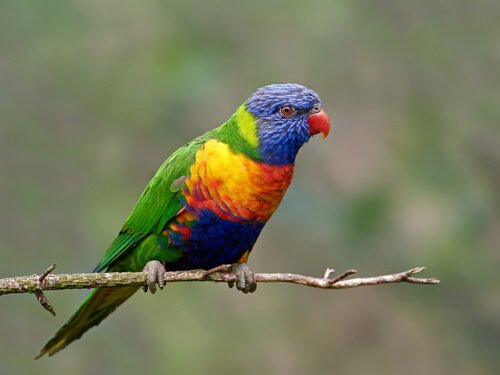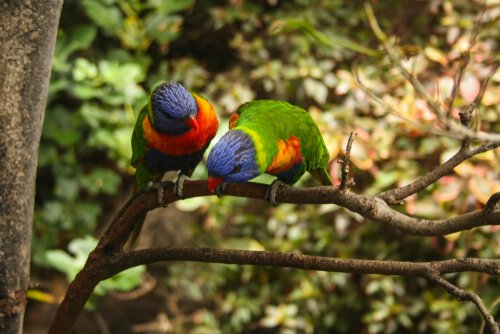Rainbow Parrot: one of the most beautiful birds in the world
There is no doubt that birds are the most beautiful animals that exist ... With their colorful plumage and fantastic flights they amaze us day by day. In this article we will talk about a particular species: the rainbow parrot and its multicolored feathers.
Characteristics of the rainbow parrot
This bird, whose scientific name is Trichoglossus moluccanus , belongs to the great family of parrots and is characterized by its plumage of various colors. The rainbow parrot is medium in size - about 30 centimeters tall - and very light (no more than 150 grams in weight).
The feathers may vary according to the subspecies, but always have well-defined areas of striking colors. For example, the head is blue, the beak is red, the nape is green, the chest is orange, the belly is blue, the wings are green and the legs are gray.
When perched on a branch you can mimic quite well with the leaves and flowers around you. In flight, yellow feathers can be distinguished under the wings.
For bird watchers there are differences between males and females; however, at first glance it could be said that both sexes are the same. That is, there is no marked sexual dimorphism as in other birds or animals.
What yes you can do it is to identify them by age, since young specimens have a black beak . With the passage of time it turns reddish or orange and that is the 'signal' that indicates that it can begin to reproduce.

Rainbow Parrot Habitat
This species is native to the Oceania region, above all in eastern and southern Australia. We can also find some small colonies in New Zealand, Tasmania and Hong Kong. It prefers very rainy tropical forest, forested areas and coastal shrubs.
In addition, we can speak of about 25 subspecies of rainbow parrot, which are present in New Guinea, New Caledonia, Solomon Islands, etc.
Reproduction and feeding of the rainbow parrot
The rainbow parrot is monogamous, which means that it retains the same pair during all his life. And that's not all, as they travel together from here to there at any time of the year. They can group with other pairs and form flocks, but they are usually two.
A couple can be somewhat aggressive and pursue others if they try to nest or feed on their own land . The same happens with other birds, such as the magpie or the honeycreeper, two species that 'share' the habitat with the parrots.

To form the nest, the rainbow parrot uses the holes of trees or holes on the ground , like those of an abandoned termite nest or anthill. On other occasions, they use their beaks and legs to dig and build their own burrow, which they condition very well with branches, leaves and flowers.
It is a very prolific bird, since all the clutches are composed of two eggs, which are incubated for three weeks. The chicks are covered by a white down, which turns gray and more dense within a few days.
They spend two months in the nest being fed by both parents and, once they leave home, they return to it for 15 days to receive food.
As for feeding,


